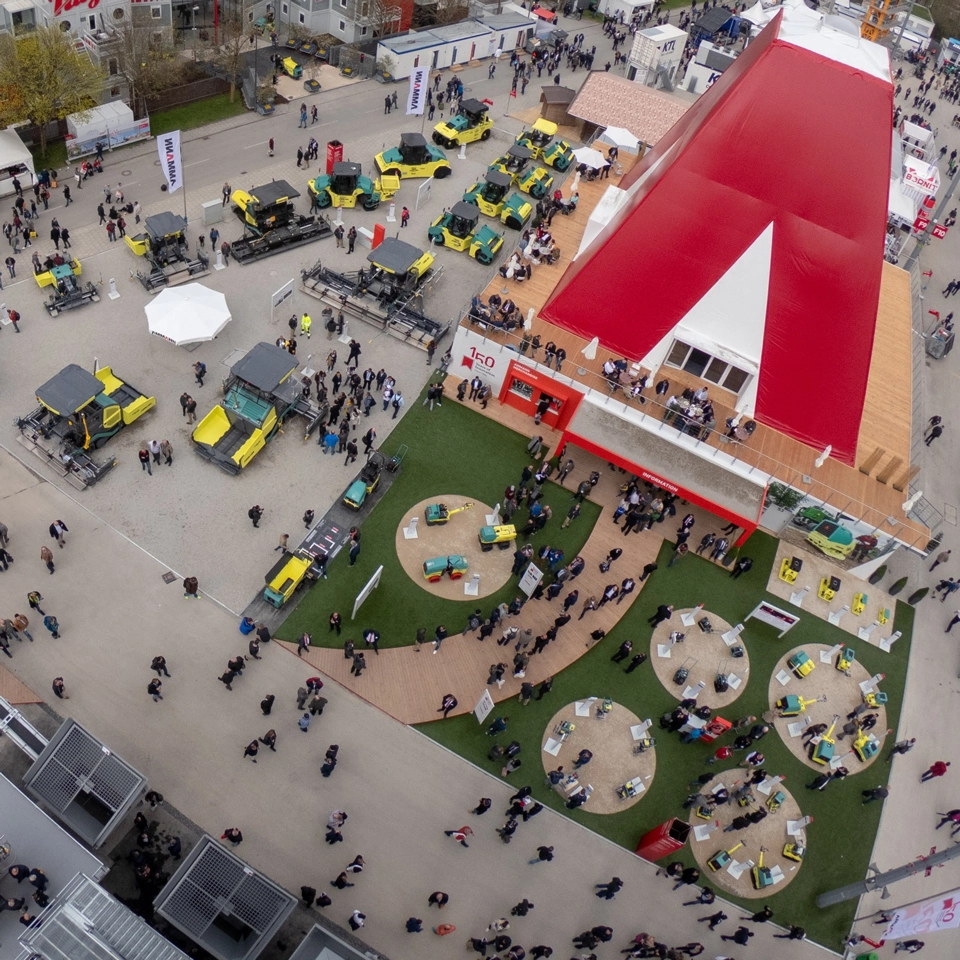Ammann Electric-Drive Plate Handles Tricky Compaction Project With Ease
Employees of Strabag AG faced a major challenge: How to effectively fill and compact a long, narrow trench on an emissions-free jobsite.
The answer: the electric-drive Ammann eAPH 70/95 Hydrostatic Vibratory Plate Compactor.
“Isn’t there a simpler solution to our problem?” This was the question asked by Strabag’s management team while working on a jobsite in Jena, Germany. The task was construction of a new microbiology research centre at Friedrich Schiller University.
When the centre was complete, a trench – 8 metres deep, 2 metres wide and 60 metres long – remained between the building and the paved slope. It had to be filled, and doing so required placement of materials in multiple layers of 30 cm to 40 cm.
Compaction with diesel- or petrol-powered machines was not possible due to exhaust emissions in the confined space. This led Strabag management to B.i.V., an Ammann Dealer. Sure enough, B.i.V. had a solution in the form of the Ammann eAPH 70/95, a powerful electric,emissions-free compactor.
A more powerful e-drive plate
Electric plates and rammers have been part of the Ammann product lineup for some time. Yet the new eAPH 70/95, a hydrostatic plate that weighs approximately 700 kg, takes e-compaction to a new level.
The eAPH 70/95 is the first in the industry in this weight class. It delivers power and covers large areas, too.
The plate is equipped with the same patented triple-shaft exciter system as the diesel- and petrol-powered versions. The system ensures consistent ground contact, and the speed and direction of travel can be adjusted by simply turning the unique Orbitrol control. The machine can hover and provide on-the-spot compaction in challenging, narrow areas.
For extra-hard-to-reach locations, such as around ventilation shafts, the Strabag employees used two other Ammann electric-drive machines: the eATR 68 Rammer and the eAPF 12/40 Forward-Moving Vibratory Plate Compactor.
Easy charging
To prepare for the project, the e-drive compactors were charged overnight. The crew also took opportunities to top off charging while the soil was being deposited in the trench.
“First we had to get used to the charging routine, but then it went really well,” a Strabag operator said. “The battery life was ideal for the individual work steps. The short soil depositing times, which gave us a chance to charge for a bit, meant the machines were always ready.”
The Ammann e-Rammer and e-Plate use the same Honda battery system, which is commonly utilised in the construction industry because of its high capacity and long service life. The batteries can be switched between the plate and rammer for convenience. They can also power construction equipment provided by other manufacturers. The eAPH 70/95, a sizable machine, requires a larger battery and charger.
All-around satisfaction
The Ammann machines impressed the Strabag employees. “All three electric compactors from Ammann proved to be very reliable and easy to operate,” one operator stated. “The results were just right. We didn’t notice any difference between the electric machines and those with combustion engines – except that the electric ones are a lot quieter and produce no exhaust fumes.”
The crew said another advantage is that the e-drive tamper motors have three balancing force stages that improve control and performance. Maintenance is simplified, too. “With electric rammers, there are no problems with dirty air filters or incorrect fuel,” an operator said. “We don’t stop for maintenance. Press the button and it runs!”

Contact Form
Schedule online meeting
Get in touch with us to meet a sales representative near you
